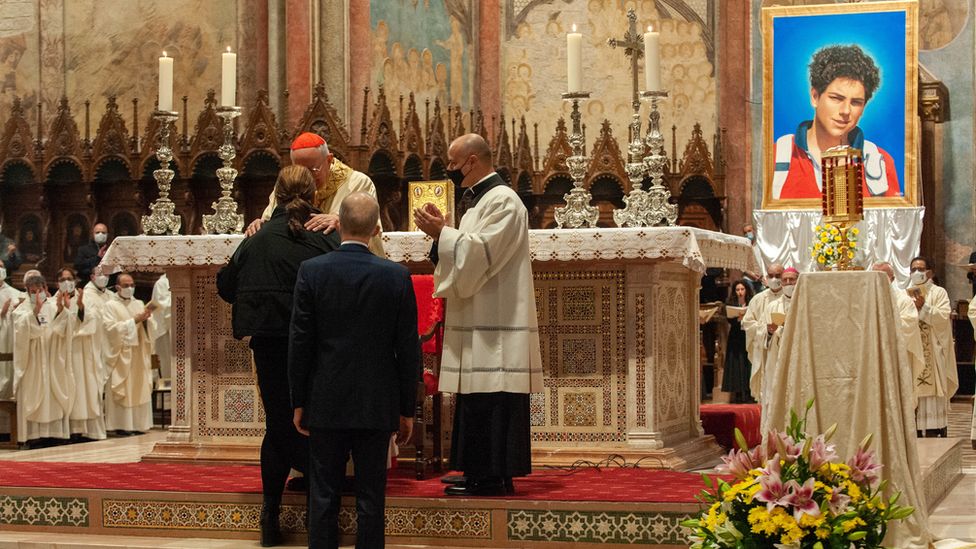“Beatification” refers to the final step before sainthood. The Church can beatify someone to declare that they are a) in Heaven and b) able to pray for you on your behalf to God if you ask. This is also true theoretically for all other Christians in Heaven. Beatification, however, is meant to be a thorough process to prove that it is true.
The Church must investigate your writings to ensure that they are “pure of doctrine”. This means, there is nothing against the faith! Ensure that your actions were motivated solely by virtue. The Church went through Pope John Paul II’s thousands of pages, from his bestsellers to his encyclical writings. It is believed that he was the most prolific pope throughout Church history.
You can still be called Venerable if you pass the test, as Pope John Paul II did.
The Church must also prove that you were martyred or performed a miracle following your death . You are then “Blessed” after beatification.
The miracle performed by Pope John Paul II was approved in January by the Vatican. According to the Church, two months after Pope John Paul II died, a French nun with Parkinson’s and her sisters prayed for him. She was healed. There were initially questions as to whether the nun’s diagnosis was correct.
The Vatican stated that they had done “scrupulous” research and determined that the nun’s sudden healing was possible. The miracle cure was unanimously affirmed by the Congregation for the Causes of Saints cardinals and bishops on Jan. 11.
A pope can be made a saint if he performs one more miracle. It is interesting to note that you needed four miracles to be canonized, while you only required two miracles to beatify. Who made the difference? John Paul II.
While the debate about whether someone should become a saint continues, there is also a “devil’s advocate” who opposes the case , and has his own office. John Paul II also changed this requirement, just like the requirement for 2 miracles. He abolished the 300-year old office in 1983. Informally, someone could be asked to act as the “devil’s advocate” during proceedings. Mother Teresa used Christopher Hitchens as her advocate.
This position was assumed by Rev. Giuseppe D’Alonzo is a promoter of justice in the Diocese of Rome. Early reports noted that D’Alonzo stated he wasn’t for or against beatification but that he felt the pope deserved it.
Beatification and canonization used not to require more miracles or a devil’s advocate, but they were more difficult. The Church had to wait fifty years before considering a person for sainthood. This was considered the right amount of time for mourning and excitement to cool down after a death.
John Paul II himself reduced the 50-year wait to only five years. Yet, John Paul II was still alive on April 2, 2005. Pope Benedict made the case for John Paul II’s sainthood in… June. The same year.
Also, the Polish pope turned the new process upside-down.
John Paul II set the precedent of not waiting even five years. He completely waived the requirement for Mother Teresa to be canonized within five years. Mother Teresa, a Nobel Peace Prize-winner, has ministered to the sick and poor for almost 50 years. The Church began an investigation after she died in 1997. Five years later, the Vatican recognized a miracle. This miracle was controversial. An Indian woman claimed that a locket featuring Mother Teresa’s image had helped her cancer. However, even her husband believed that doctors and medicine were the true cure. Mother Teresa was still beatified in 2003. If another miracle is discovered, she can also be named a saint.
Some people criticize Pope John Paul II’s beatification, citing reasons other than haste or apparent laxness. The sex abuse scandals of 2002 broke under John Paul II’s supervision. Initially, the Church provided prosecutors with a list of 80 priests accused of abuse. This was considered insufficient, as at least 250 priests were suspected of abuse within the Boston Archdiocese.
However, when cardinals tried to expel priests from the Church who had ever abused minors and suggested that police be notified of any sex abuse claims made, the Vatican, under the leadership of the pope, refused. This ambiguity still haunts the church nine years later. Many of its followers are also affected by this ambiguity.
